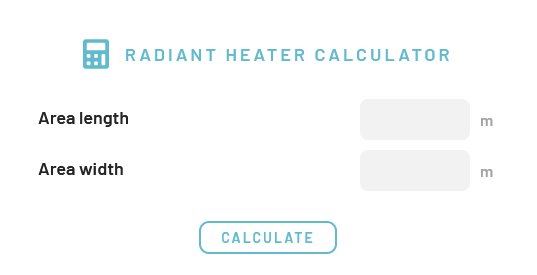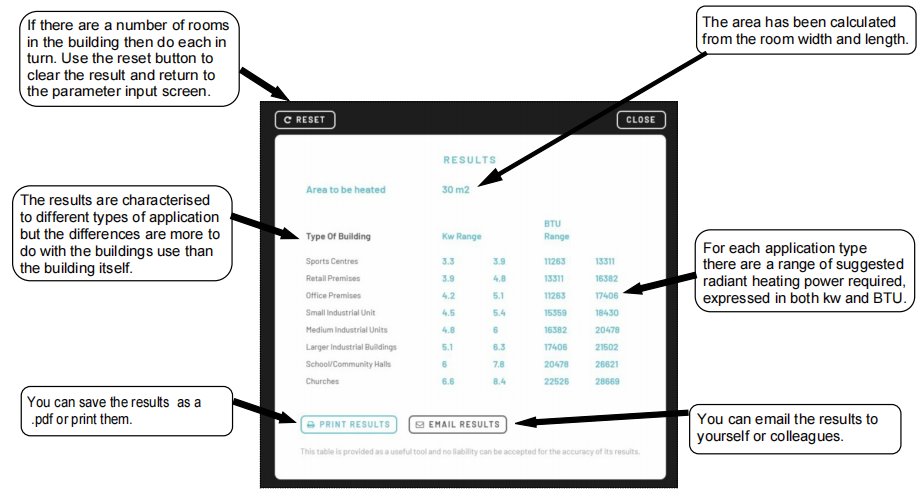Radiant Heater Calculator
Radiant Heater Calculator
Introduction to the Radiant Heater Calculator
By choosing to use our radiant heater calculator you will have already appreciated the difference between space heating and radiant heating. If you have any doubt about this please look at this page here that explains all. Before you look for a radiant heater solution it is well worth understanding how much radiant heat your building needs. This is where our Radiant Heater Calculator comes in useful.
Our Radiant Heater Calculator Tool is aimed at commercial and industrial type spaces rather than for domestic applications. It does not require the level of detail that is required for heat loss calculations (i.e. u-values, window sizes etc. ) but it is simple enough to estimate of how much radiant heating you need. For the vast majority of applications it is capable of establishing your radiant heater requirements.

Notes about the inputs for the Radiant Heater Calculator
The radiant heater calculator requires two inputs - length and width.
This is simple enough if you have a rectangular room. If however your floor plan is more complex you might want to split it into a number of rectangles and treat each in turn. Alternatively, you could work out the overall floor area of the room in m2. Then put the square root of the area into the width and length box on the calculator.
Understanding the results from the Radiant Heater Calculator
The results window offers an array of application types each with the recommended range of radiant heater capacity needed.

Ultimately the radiant heater calculator has some a number of heating factors based on watts per m2 of floor area that are applied to the application and multiplied through the floor area to deliver the results. It is useful to understand some background to these rates.
Buildings in constant use will tend to need less heating capacity than those that are used for occasionally for short durations. With occasional use buildings, such as community halls and churches, a quick warm up time is neeed and therefore greater heating capacity is required. In contrast, offices in constant daytime use can usually sacrifice time of warm up and achieve what they need with less heating power. Also consider if the occupants of the building are to be sedentary or active. For example active environments, such as sports centres and workplaces where there is physical work, will require less heating than offices for example.
Other considerations when using the Radiant Heater Calculator
The radiant heater calculator is enough to get you in the ball park, however, there are further considerations.
• What type of radiant heaters?
• What will be powering them - electricity (230v or 415v), gas, oil, hot water, steam ...?
• How many?
• What output per heater?
• How should they be mounted - wall mounted, free standing, ceiling recessed, roof hung?
• What is the ideal height?
• How should they be controlled?
There are other helpful pages and calculator tools on this site that can help you answer these questions. But sometimes it is simpler to just ask us by phone or email.
What next?
So you have used the radiant heating calculator and you need some heaters. Call us!
